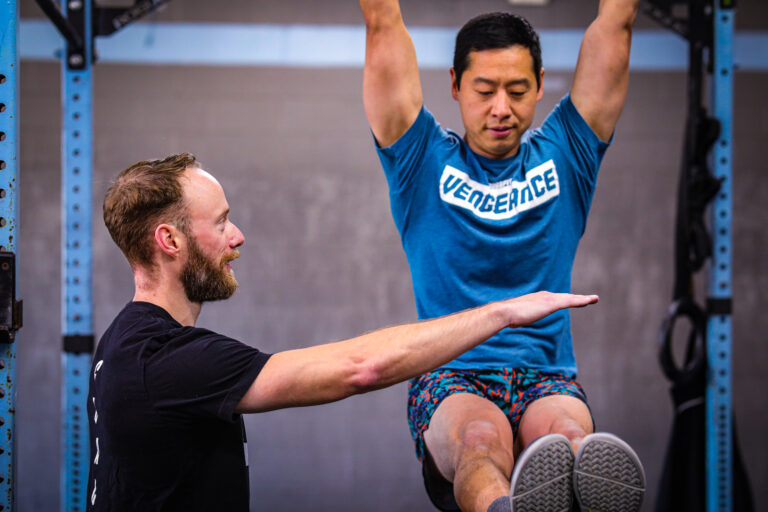
Scaling CrossFit Workouts Without Sacrificing Intensity
One of the greatest things about CrossFit is that it’s designed for everyone—regardless of fitness level. Whether you’re a seasoned athlete or brand new to the gym, scaling workouts allows you to train safely and effectively while still pushing your limits. But how do you scale a workout without losing its intended intensity? Let’s break it down.

1. Understand the Workout’s Intent
Before modifying a workout, ask yourself: What’s the intended stimulus?
- Is the workout meant to be high-intensity and fast-paced?
- Does it focus on strength and controlled movement?
- Are we building endurance and stamina?
For example, a workout like Fran (21-15-9 Thrusters & Pull-Ups) is meant to be quick and intense. If it takes you over 10 minutes, you likely need to scale the weight or movement. On the other hand, Murph (1-mile run, 100 pull-ups, 200 push-ups, 300 air squats, 1-mile run) is a longer endurance challenge, so pacing is key.
2. Adjust the Load, Not the Effort
Scaling doesn’t mean taking it easy—it means modifying to match your capacity while still maintaining intensity.
- Lower the weight but keep the reps the same. (E.g., if RX is 135 lbs for a barbell movement, try 95 lbs.)
- Use progressions like banded pull-ups instead of strict pull-ups or box push-ups instead of full push-ups.
- Modify advanced movements (e.g., substituting knee raises for toes-to-bar).
The key is to ensure the workout still feels challenging at your level.
3. Maintain the Time Domain
CrossFit workouts are designed with a specific time domain in mind.
- If a workout should take under 10 minutes, but you’re moving too slowly, scale reps or weight.
- If it’s a longer endurance WOD, focus on sustainable pacing instead of going too hard too early.
By keeping the intended time frame, you ensure that your intensity stays on track.
4. Adjust Reps & Rounds Smartly
If a workout has high reps or volume, reduce them while keeping the format intact.
- Instead of 100 double-unders, do 50 or single-unders while maintaining speed.
- Instead of 5 rounds, do 3 rounds while maintaining intensity.
Scaling this way keeps the workout effective while avoiding excessive fatigue.
5. Listen to Your Body (But Push Yourself!)
Scaling doesn’t mean making the workout easy—it means making it appropriate. If you finish and feel like you could have done way more, you might have scaled too much. Conversely, if you’re moving so slowly that the intensity drops, you may need to adjust.
Ask a coach for guidance—they can help you find the right balance between challenge and sustainability.
Scaling = Progress
Every top CrossFit athlete once scaled workouts. Scaling isn’t a weakness—it’s a tool for improvement. Over time, as strength and endurance build, you’ll progress toward doing workouts RX.
No matter where you are on your journey, the goal is always the same: Move well, push your limits, and get stronger every day. 💪🔥



